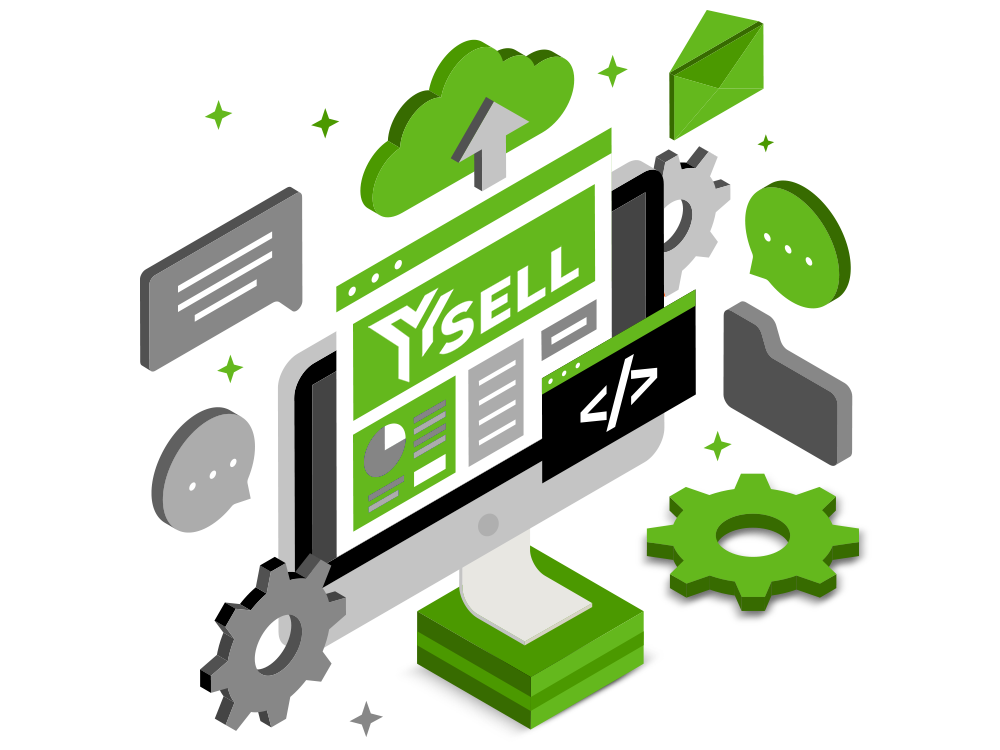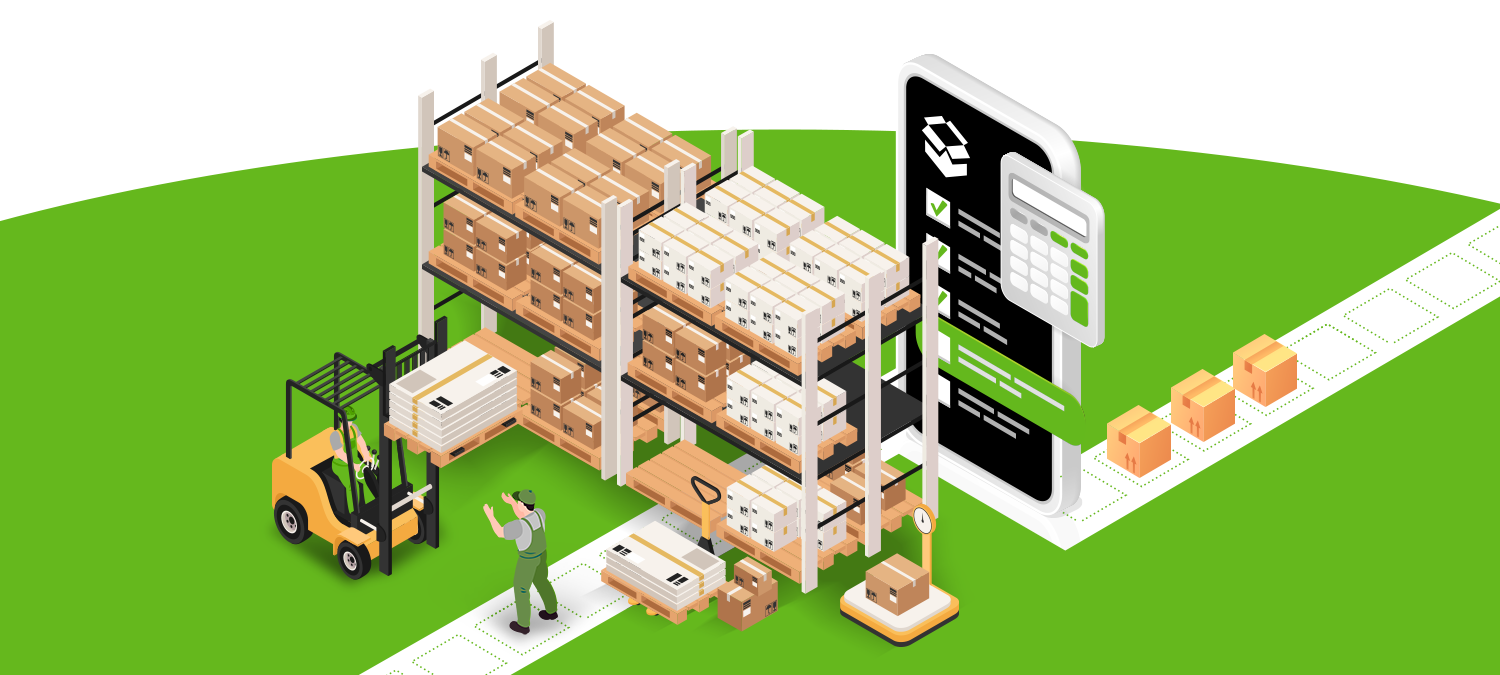Inventory management plays a vital role in the successful operation of any business. Effective inventory management enables a business to have the required goods or materials at the right time and in the right quantity, minimising the risk of overstocking or understocking. In today’s competitive business world, especially in the e-commerce realm, real-time inventory management is becoming an integral part of a successful business strategy. In this article, we will explore what this system entails, its advantages and disadvantages and how it can be implemented.
- What does real-time inventory management mean?
- Benefits of real-time inventory management
- What does real-time inventory management mean?
- How to organize real-time inventory management?
- The best software solution for real-time inventory management
- Frequently Asked Questions about Real-Time Inventory Management
What does real-time inventory management mean?
In the past, inventory management was based on experience, intuition and common methods. Companies used basic tables and empirical approaches to control and replenish their inventory. However, new opportunities for real-time inventory management emerged with the development of computer technology and data transmission networks. This allowed companies to track inventory levels more accurately, automate management processes and make more informed decisions based on up-to-date information.
Today, inventory management is a systematic approach to tracking, controlling and managing a company’s inventory of goods or materials using technologies that provide real-time information about the availability of products in stock. It relies on specialised software, barcode scanners, automatic identification systems and other tools to ensure that inventory data is constantly updated.

Benefits of real-time inventory management

Real-time inventory management offers several benefits that allow businesses to become more flexible, efficient, and competitive. All of these benefits are focused on customer needs, minimizing losses, and improving service quality.
Maximum date accuracy and timeliness
Real-time inventory management provides the ability to obtain up-to-date information on the quantity and location of goods. This helps to avoid errors in decision-making based on outdated information and enables accurate inventory planning and management. For example, a business owner can easily determine the remaining quantity of items in stock and determine when to reorder a new batch.
Stock optimization
Real-time inventory management allows for more accurate determination of the optimal inventory level. This helps to avoid stockouts and the loss of customers due to product unavailability. It also reduces excess inventory and associated costs. For example, automatic notifications of low inventory levels enable businesses to react promptly and replenish them before stocks are completely depleted.
Effective supply planning
With real-time inventory information, a company can accurately plan product deliveries based on demand and timing factors. This enables faster product delivery and improved customer service. For example, if the inventory management system detects that stocks of a particular item are running low, it can automatically generate a replenishment order. This helps to avoid situations where customers are unable to buy the product they want because it is not available in stock.
Quick response to changing demand
Real-time inventory management allows for quick response to changes in demand. If there is a sudden increase in demand for a particular product, the inventory management system alerts the need for replenishment. This enables the business to promptly place additional orders and ensure the availability of the items in the shortest possible time. Such flexibility helps to avoid sales losses and meet customer needs.
Risk reduction and forecasting improvement
The system enables data analysis and forecasting of future demand trends. Businesses can make more informed decisions regarding purchasing, resource allocation and strategy development. This helps reduce the risk of product shortages or misallocation and improves long-term planning.
Disadvantages of real-time inventory management

Like any other system, real-time inventory management has its own drawbacks that need to be taken into account when implementing it.
1. Dependence on technology
The system is closely linked to the use of technologies such as specialized software, barcode scanners and data transmission systems. Companies must ensure the stability and reliability of their technical infrastructure and provide support and training for personnel. In the event of system failures or technical malfunctions, data updates may be delayed and there is a risk that inventory information may be inaccurate.
2. Investment in equipment and staff training
Real-time inventory management requires investments in special software, technical equipment and staff training. This can be an additional financial and time burden for companies, especially for small and medium-sized enterprises.
3. Implementation complexity
Implementing the system can be a difficult process. It requires performing analyses and reorganizing existing processes, as well as integrating with other systems such as e-commerce and accounting systems.
4. Security and privacy risks
The system involves processing a large amount of inventory and sales data. This may entail risks in terms of data security and confidentiality. It is important to take appropriate measures to protect data, such as using reliable encryption systems and implementing access control mechanisms.
The disadvantages mentioned are not insurmountable obstacles. Rather, they are challenges that companies face when implementing and using the system. With proper planning, employee training and effective data management, companies can overcome these drawbacks and derive significant benefits from real-time stock management.
How to organize real-time inventory management?

Effective real-time inventory management requires not only an understanding of the pros and cons, but also the right organization. Software plays a key role in automating inventory management processes, accurate tracking and data processing. The choice of software depends on the needs and characteristics of the company. It is important to carefully consider the feature set, reliability, flexibility and suitability of the chosen software for your organization’s needs. Let’s take a look at some important software solutions that can help with organization real-time inventory management.
1. Warehouse management systems
There are several warehouse management software systems that provide real-time inventory management capabilities. They enable companies to track and control inventory levels, optimize product placement in the warehouse, automate receiving and shipping, and ensure accurate replenishment when needed.
2. Enterprise Resource Planning (ERP) systems
ERP systems provide a comprehensive approach to business process management, including inventory management. They integrate data and processes from various departments within a company, enabling more effective real-time inventory management. ERP systems ensure accurate real-time inventory tracking, demand forecasting, automation of order and supply processes, and integration with other systems such as accounting systems and customer relationship management systems.
3. Barcode scanning systems
The use of barcode scanning systems allows businesses to accurately and rapidly track inventory within the warehouse and when interacting with customers. This simplifies inventory counting, receiving, shipping and tracking movements within the warehouse. Barcode scanning systems, combined with software solutions, enable more accurate inventory management and minimize errors.
4. Analytical tools and reporting
An important component of real-time inventory management software is its analytical tools and reporting capabilities. They enable businesses to analyze data on inventory, sales, demand and other parameters to make informed decisions and develop inventory management strategies.
The best software solution for real-time inventory management

Ysell.pro is a real-time inventory management software that combines the functionality of multiple systems, providing a comprehensive approach to efficient inventory management. The system allows businesses to control inventory levels across various warehouse locations or storage areas. This enables more accurate inventory management, taking into account their distribution and availability in different locations.
Ysell.pro integrates with various popular e-commerce platforms, ensuring automatic synchronization of inventory levels with the store, updating product availability information, and preventing incorrect display of available stock. The system automatically tracks and determines the minimum inventory level for each product. This helps businesses replenish their inventory in a timely manner and avoid product shortages, ensuring uninterrupted supply and meeting customer needs.
Ysell.pro also provides extensive capabilities for analyzing data on inventory, sales, demand trends, and other key indicators. This allows businesses to make informed decisions based on data, optimize inventory levels, forecast demand, and improve inventory management strategies.
Ysell.pro includes warehouse management, order management, and barcode scanning, allowing for centralized control of all aspects of inventory management. This enables businesses to effectively coordinate supply processes, orders, and warehouse operations within a single system.
Inventory management system is an integral part of efficient business operations. It allows for obtaining real-time information on product stock levels, optimizing stock levels, planning deliveries effectively and responding promptly to changes in demand. The system requires investment and staff training, but the benefits that can be gained after its implementation make real-time inventory management a crucial tool for businesses in today’s competitive world. When choosing inventory management software during the implementation process, it is recommended to consider solutions like Ysell.pro, which offers extensive capabilities for efficient inventory management and integration with other systems.
Frequently Asked Questions about Real-Time Inventory Management
1. Which data needs to be tracked in real-time?
For effective real-time inventory management, it is essential to track various data, including current inventory levels, sales frequency, customer demand, supply information, and sales history. These data points assist businesses in making informed decisions regarding inventory replenishment, supply optimization, and demand forecasting.
2. Why is synchronization with e-commerce platforms necessary?
Synchronizing inventory levels with e-commerce platforms is an essential aspect of real-time inventory management. It allows businesses to accurately display product availability on their online store or other commerce platforms. When sales are made through multiple channels, inventory synchronization helps avoid situations where a product has already been sold but is still listed as available on the website.
3. How does Real-Time Inventory Management help reduce losses?
Real-time stock management helps reduce losses by providing more accurate demand forecasting and inventory control based on real-time data. This helps avoid excess inventory that can lead to obsolescence or deterioration in quality. Accurate inventory tracking also helps avoid product shortages, enabling businesses to meet customer demands and minimize sales losses.







